When more than a thousand leaders from across global finance gathered at Convene Brookfield Place in New York, the message was clear: open collaboration has moved from principle to performance. The Open Source in Finance Forum (OSFF) New York 2025, hosted by FINOS and the Linux Foundation, was not just another industry gathering. It was proof that open source now delivers measurable business value across innovation, risk management, and operational efficiency.
The event marked a milestone for the open-finance movement. With record sponsorship, over 1,000 registrants, and representation from the world’s leading financial institutions, technology providers, and regulators, OSFF New York 2025 showcased how open collaboration has become an integral part of how the financial industry builds, secures, and scales technology.
(If you were not able to join us in person, all of the videos from the presentations can be found on the FINOS website here.)
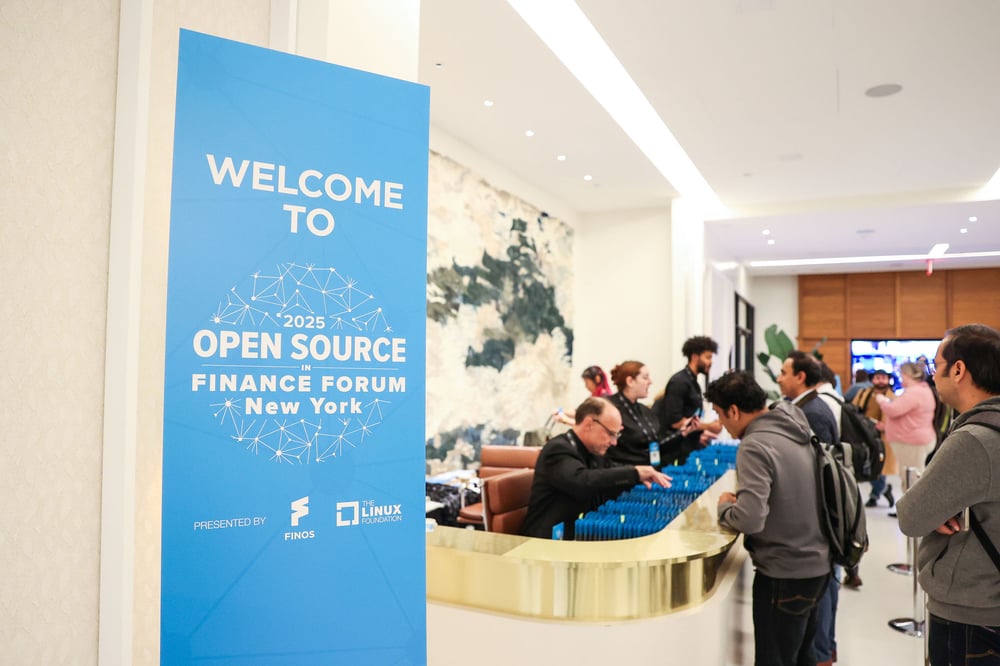
Fluxnova: A Defining Moment for Collaborative Infrastructure
The headline announcement of OSFF 2025 was Fluxnova, a production-grade orchestration platform co-maintained by Fidelity, NatWest, Deutsche Bank, Capital One, and BMO under FINOS governance.
“Fluxnova gives our industry the ability to build together, share together, and safeguard together,” said Gabriele Columbro, Executive Director of FINOS. “It’s a landmark moment for financial technology – the clearest path yet to the strategic ROI open collaboration can deliver.”
Already running millions of workflows per day across member institutions, Fluxnova provides audit-ready process automation and stateful recovery designed for regulated environments. For Joe Frazier, Fidelity’s Head of Architecture and Engineering, the choice to co-develop under FINOS was clear: “A vendor changed its licensing model, and we faced a choice – fork privately, sponsor it ourselves, or join peers under a neutral foundation. FINOS was the only way to do it right.”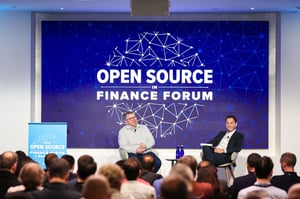
Fluxnova’s launch demonstrated how shared development reduces cost and risk while improving quality and speed. It also provided a real-world example of how open governance can make critical infrastructure both transparent and sustainable. See the breakout Fluxnova sessions here from Fidelity and Natwest, as well as here from the Deutsche Bank, Fidelity, and Natwest panel.
OpenGris: The New “TCP/IP for Compute”
If Fluxnova represented collaboration across institutions, OpenGris represented it across infrastructure. Co-developed by Citi and AWS, OpenGris enables workloads to run seamlessly across on-prem grids and cloud environments through a universal policy-driven scheduler. 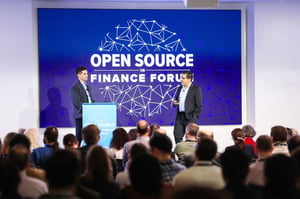
“Route policy, not SDKs,” said Ritesh Bansal, Director of Quant Platforms at Citi. The proof-of-concept demonstration showed the same Python workload running across Symphony grids and AWS ECS without modification, optimizing for performance and cost.
As Columbro observed, “OpenGris turns operational overhead into shared infrastructure – exactly the kind of efficiency and transparency our members are demanding.”
The Economics of Open: Quantifying ROI
If the announcements proved open collaboration works, the research shared at OSFF explained why.
Frank Nagle, Chief Economist at the Linux Foundation and researcher at MIT, presented new findings estimating that open source contributes nine trillion dollars in global economic value. His analysis showed that firms actively contributing to open source see twice the productivity gains of those that only consume.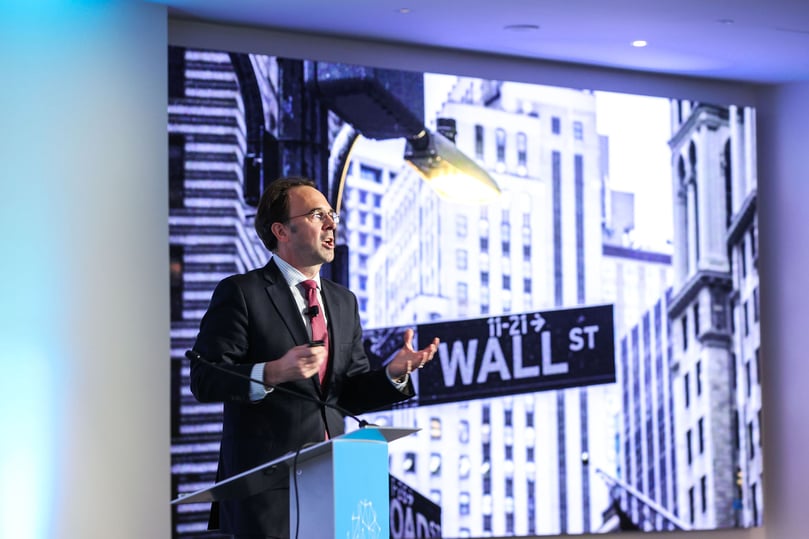
“Open source isn’t free – it’s an infrastructure investment with compounding returns. Collaborate on the core and compete on the edges,” Nagle said.
His research - echoed in the 2025 State of Open Source in Financial Services Report presented by Hilary Carter, Linux Foundation SVP of Research - confirmed that 90% of financial firms now view open source as strategic.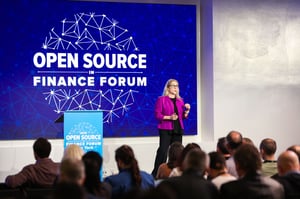
Tosha Ellison, FINOS Head of Research, extended that work into action with the FINOS ROI Calculator, allowing member firms to quantify how open collaboration drives efficiency, reduces duplication, and strengthens compliance. “Open source is an investment portfolio,” she said. “Its dividends are efficiency, resilience, and trust.”
Nagle, Carter, and Ellison’s research set the stage for a powerful message from Michael Abbott, Global Banking Lead at Accenture, who explained how collaboration converts cost into capital. With global banking technology spend nearing one trillion dollars and growing two to three times faster than revenue, Abbott argued that collaboration is no longer optional – it is the only path to sustainable growth.
 Abbott traced the history of cooperative infrastructure – from Visa’s shared network to the rise of Linux and Kubernetes – to illustrate how industries unlock scale by neutralizing non-differentiating technology and mutualizing cost. He pointed out that roughly 70 percent of the technology stack in financial institutions is non-differentiating and therefore ripe for shared development.
Abbott traced the history of cooperative infrastructure – from Visa’s shared network to the rise of Linux and Kubernetes – to illustrate how industries unlock scale by neutralizing non-differentiating technology and mutualizing cost. He pointed out that roughly 70 percent of the technology stack in financial institutions is non-differentiating and therefore ripe for shared development.
“Open wins every single time – when you commit to it,” Abbott said.
He backed the argument with compelling data: banks that embrace open standards and infrastructure are cutting compute and software costs by 50 to 90 percent and seeing major productivity gains. He cited Nubank, built entirely on open technology, which operates 70 percent cheaper per active account than traditional peers. “That’s not theoretical ROI – that’s open ROI,” Abbott said.
The message resonated across OSFF: open collaboration is not just a governance strategy – it is a business strategy that turns cost into capital.
Shared Standards That Scale: FDC3 and CDM
The event also marked major milestones for FINOS’ open-standards projects, underscoring that interoperability and transparency are now competitive advantages.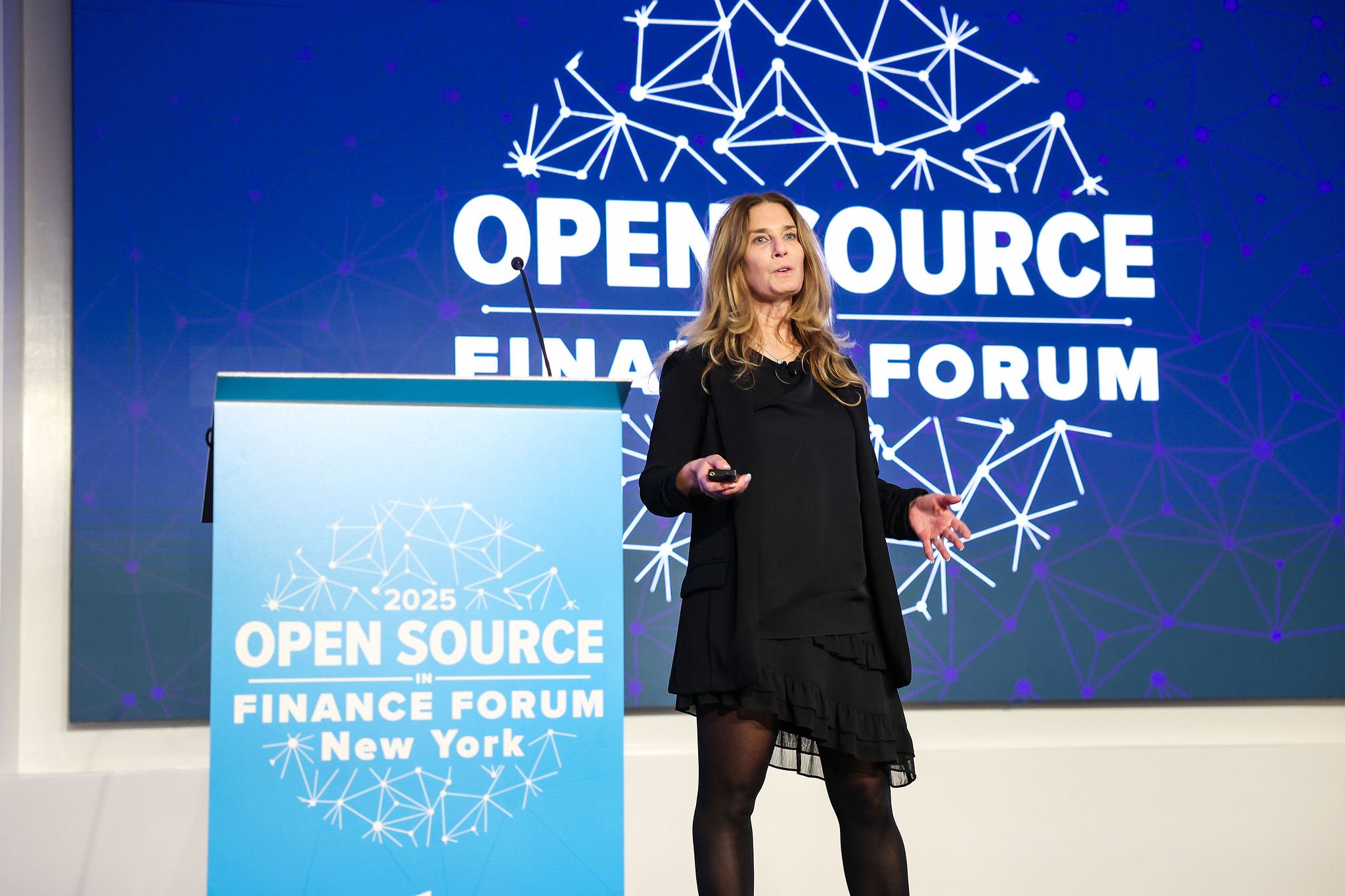
BMO’s X 9.0 platform became FDC3 2.0 conformant, joining BlackRock’s Aladdin, Morgan Stanley’s ComposeUI, and interoperability vendors including interop.io, connectifi, and Here (formerly OpenFin). With 1,500 active users, BMO’s certification demonstrated that FDC3 has moved firmly into enterprise production.
“Interoperability is trust made tangible,” said Sitija Sarkar, FINOS Vice Chair and Managing Director at BlackRock. “It means our platforms can communicate safely and seamlessly – within firms and across them.”
At the same time, the Common Domain Model (CDM) achieved Active Project status, marking its transition from development to industry standard. Maintained by contributors from ISDA, ICMA, ISLA, and several leading banks, CDM 6.0 now serves as the shared language for trading and collateral data, simplifying integration and compliance.
Together, FDC3 and CDM proved that open standards can deliver both regulatory assurance and measurable operational savings, advancing the financial industry toward seamless digital interoperability.
Turning Risk Into Assurance
If ROI was the headline theme of OSFF 2025, risk management was its backbone. Across multiple announcements, FINOS and its members demonstrated that open collaboration doesn’t increase risk – it makes risk visible, auditable, and manageable.
The launch of AI Governance Framework 2.0 exemplified this principle. Integrated with Common Cloud Controls, the framework provides an open, code-based model for AI and cloud assurance with concrete, shared guardrails to deploy GenAI including Agentic AI safely. It maps 23 risks and mitigations aligned with the EU AI Act and NIST standards, enabling firms to confidently onboard and automate compliance across jurisdictions.
“Open assurance is what makes open source enterprise-ready,” said Columbro. “These frameworks were built by financial institutions for financial institutions.”
That governance foundation extends through CALM (Common Architecture Language Model), now deployed in more than 2,000 applications. CALM unifies architecture, cloud, and software controls, enabling continuous compliance.
“CALM turns app design into code, automates compliance checks, and has already cut review cycles from months to weeks,” Abbott said. “That’s speed with confidence. The future isn’t just about building faster – it’s about building smarter and safer.”
Default to Open: A Cultural Shift
Among the most talked-about keynotes came from Manik Surtani, Head of Open Source at Block, who captured the conference’s spirit.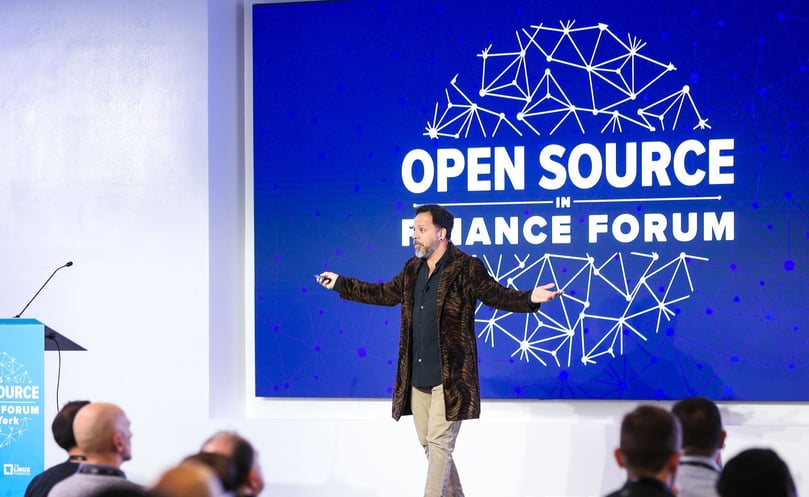
“Open source is not competition – it’s infrastructure,” Surtani said. “When everyone defaults to open, that builds a habit – and habits scale.”
He introduced Default to Open, a policy framework encouraging teams to make openness the default rather than the exception. He pointed to gRPC, which evolved from an internal Google project into a global protocol, as proof that open collaboration drives exponential innovation.
Turning to AI, Surtani offered both a challenge and a warning: “AI is the most powerful technology of our age – and right now, most of it is happening in private. Would you trust the engine of global prosperity to a handful of corporations? The internet works because it’s open. We can do it again – and we must.”
From Proof to Practice: Scaling the ROI of Openness
By the close of OSFF New York 2025, one truth was undeniable: open collaboration is no longer a movement – it is the operating model for modern finance. Across two days of keynotes and sessions, as well as the 2025 FINOS North America Community Awards, openness delivered not just innovation but measurable returns in cost efficiency, risk assurance, and developer productivity.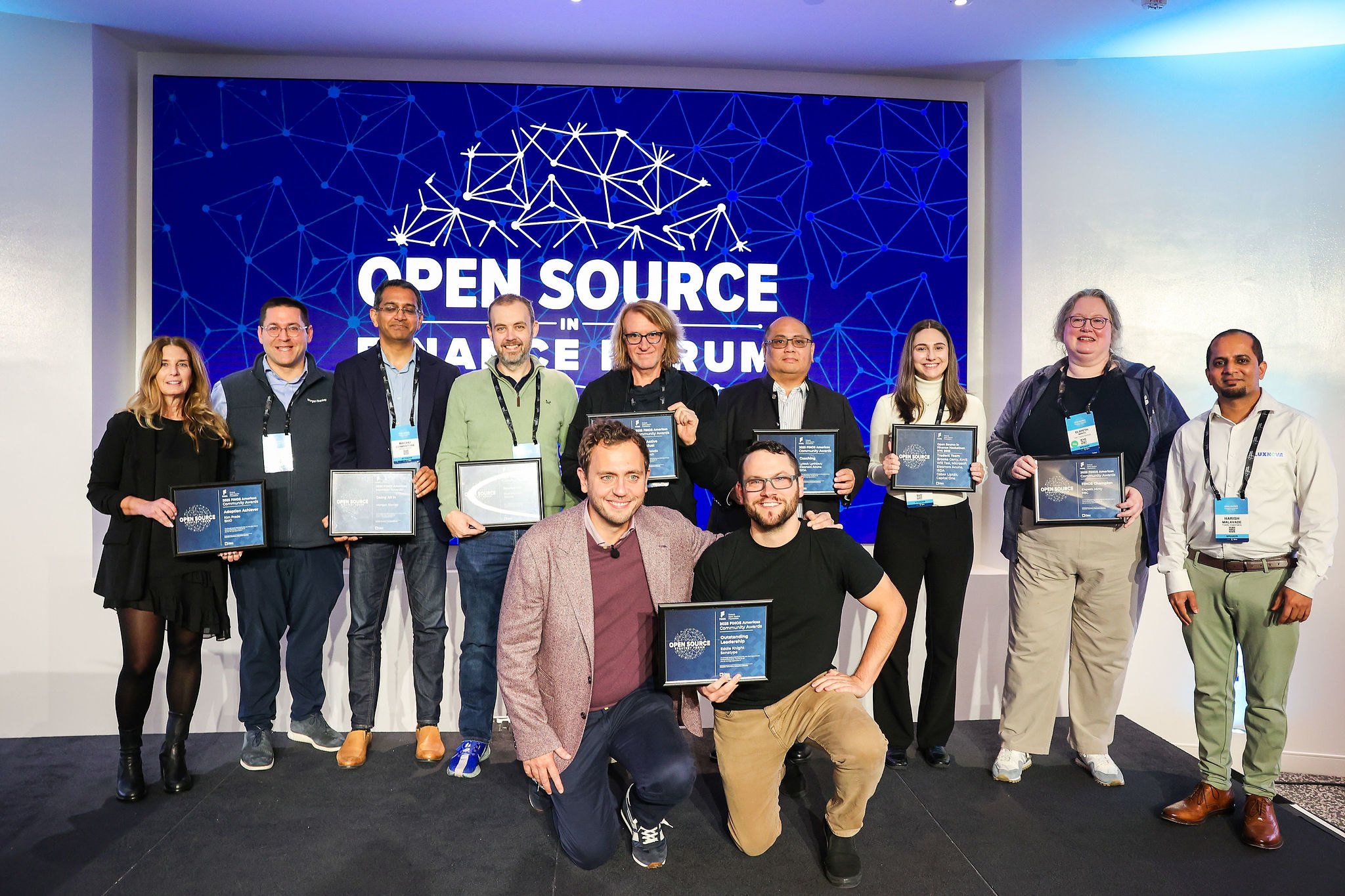
Fluxnova and OpenGris showed how shared infrastructure can deliver production-grade outcomes while reducing complexity. BMO’s FDC3 conformance and CDM’s Active status proved that open standards create lasting interoperability. AI Governance 2.0 and CALM (with MCP, & combined with AIGF & CCC) established new foundations for continuous compliance.
But also be on the lookout for these up and coming FINOS incubating projects and new ideas introduced at OSFF NY: SDLC Controls, Evolution at Scale, OS-C Data Mesh, as well as Common Cloud Controls (CCC).
Looking ahead to 2026, FINOS and its members are focused on scaling these successes. As Columbro reflected, “Yesterday we proved open source delivers value. Today we show how to amplify that value inside our organizations.”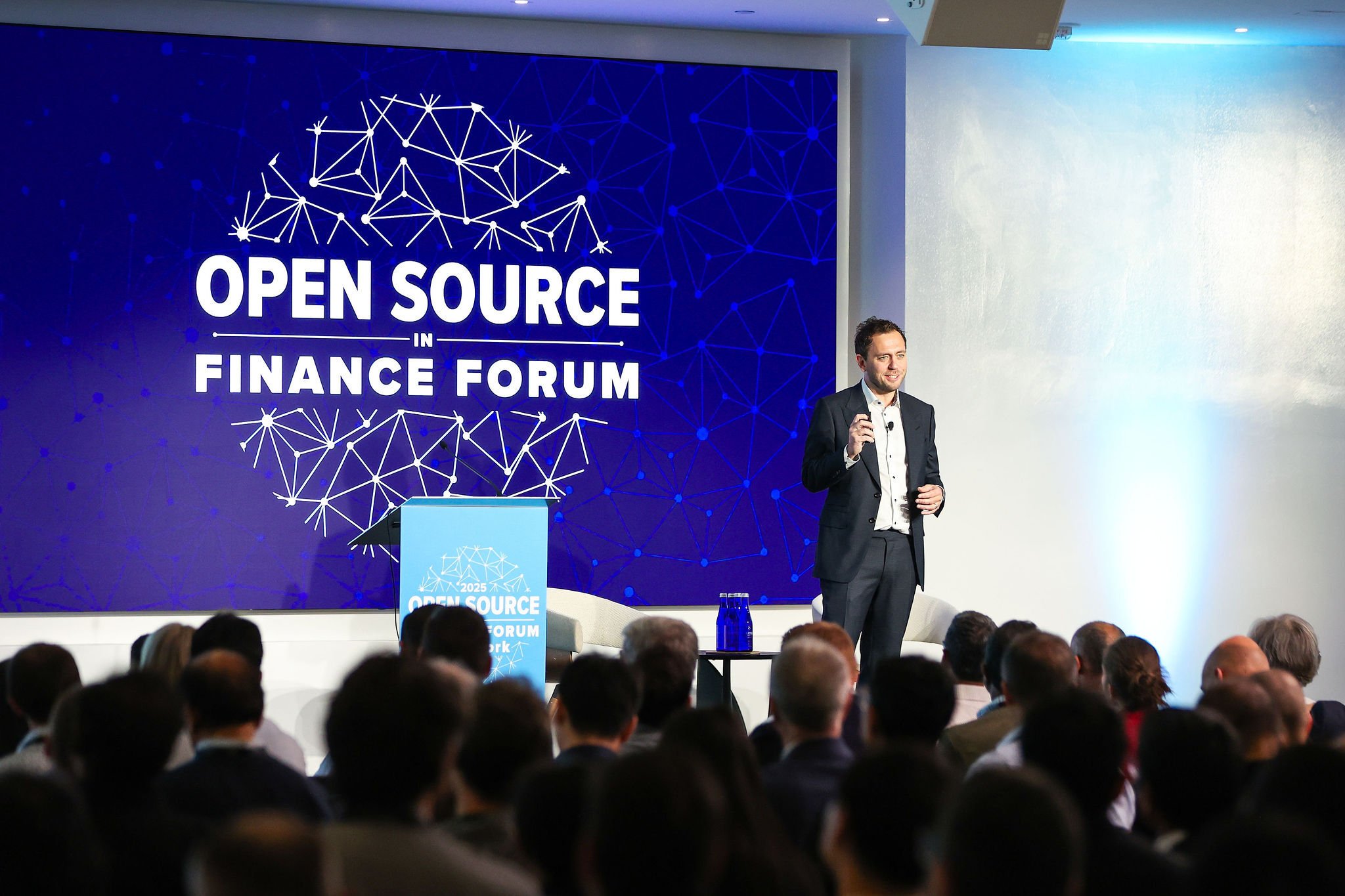
The foundation’s mission now is to extend that value across every layer of financial technology – turning open collaboration into shared infrastructure, shared assurance, and shared intelligence.
FINOS – Building the future of open finance together.
Learn more about FINOS - subscribe to our updates.
FINOS Good First Issues - Looking for a place to contribute? Take a look at good first issues across FINOS projects and get your feet wet in the FINOS community.
State of Open Source in Financial Services Report 2024 - Learn about what is really happening around open source in FSI.
This Week at FINOS Blog - See what is happening at FINOS each week.
FINOS Landscape - See our landscape of FINOS open source and open standard projects.
Community Calendar - Scroll through the calendar to find a meeting to join.
FINOS Slack Channels - The FINOS Slack provides our Community another public channel to discuss work in FINOS and open source in finance more generally.
Project Status Dashboard - See a live snapshot of our community contributors and activity.
Events - Check out our upcoming events or email marketing@finos.org if you'd like to partner with us or have an event idea.
FINOS Open Source in Finance Podcasts - Listen and subscribe to the first open source in fintech and banking podcasts for deeper dives on our virtual "meetup" and other topics.

